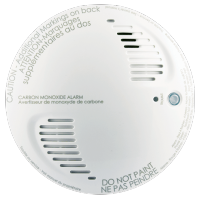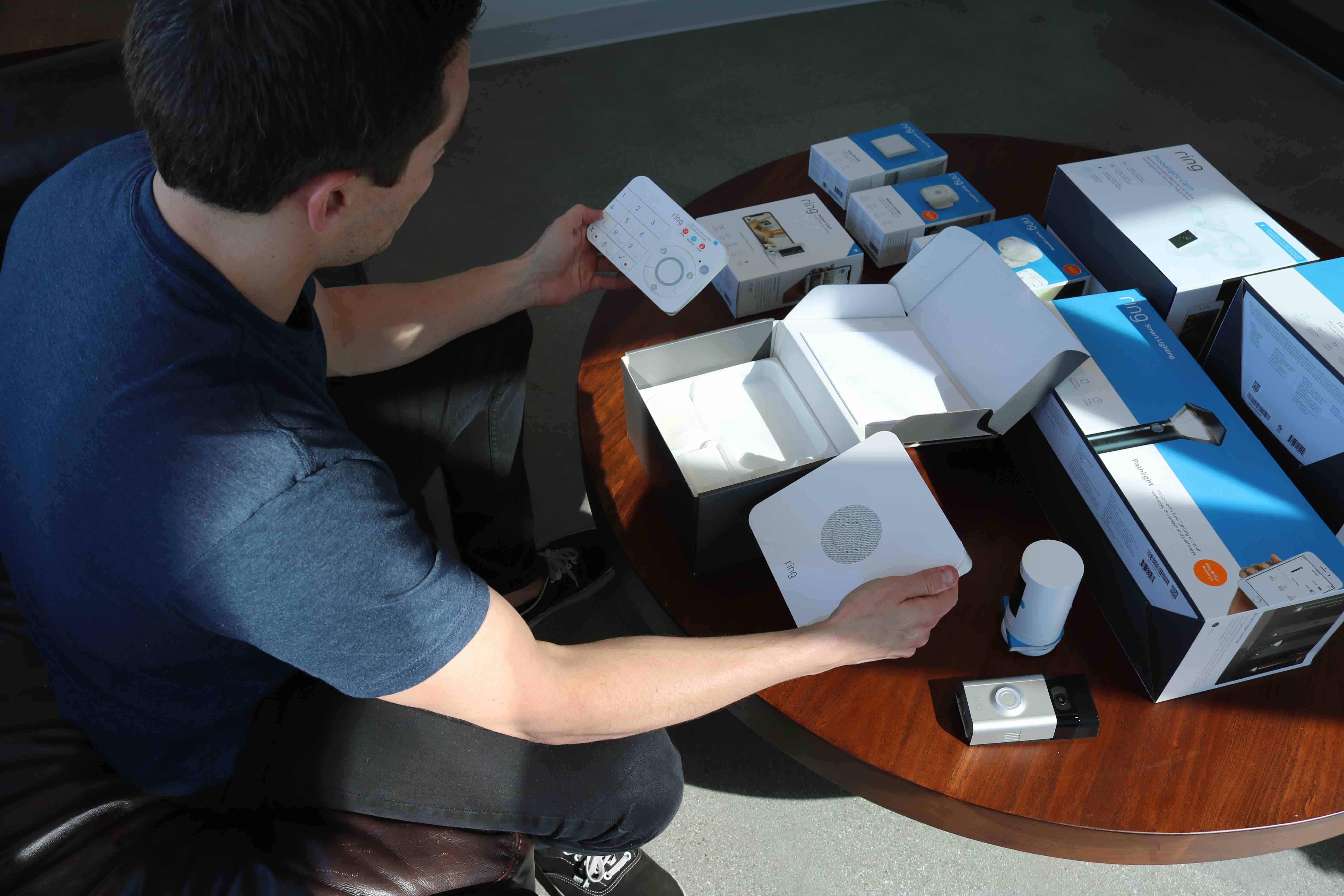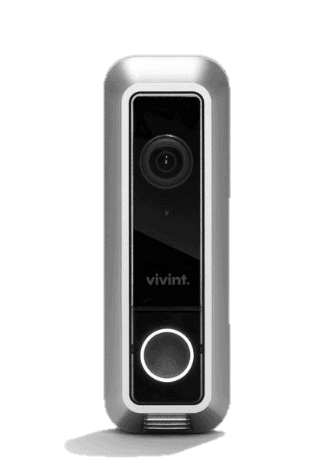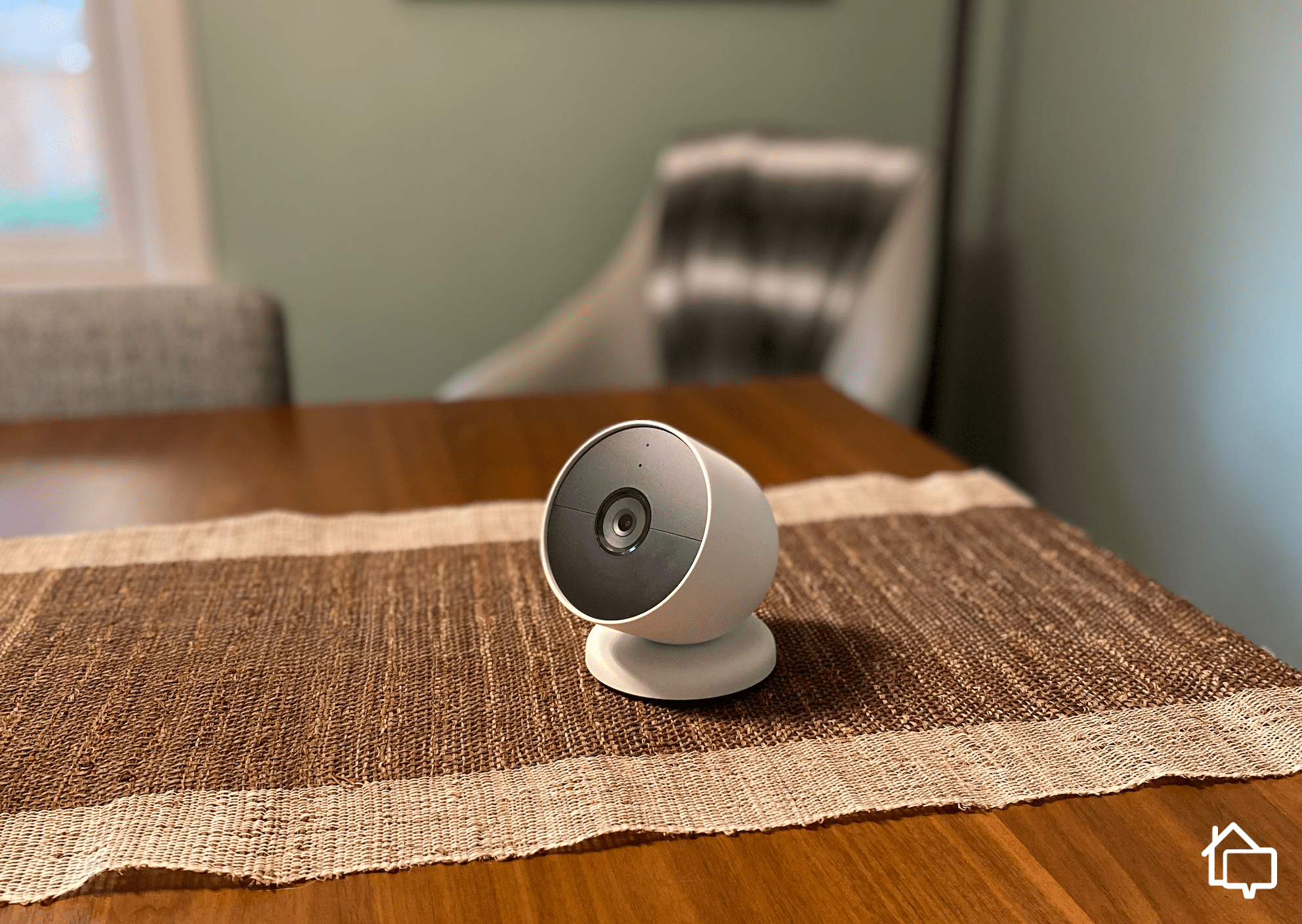First developed for World War II, motion detectors have come a long way from the radar that pilots used way back then. They’re now essential components of all the best home security systems, and they fit nicely in the corner of your living room or hallway. Whether you want to beef up your home’s security, enable hands-free lighting, or keep tabs on activity while you’re away, motion detectors offer versatile and affordable solutions.
How does a motion detector actually work? We performed countless hours of research and product testing on motion detectors so you don’t have to. In this guide, we’ll teach you all about the inner workings of modern-day motion detectors, and then show you how to apply those basics to up your home’s security by covering the following topics:
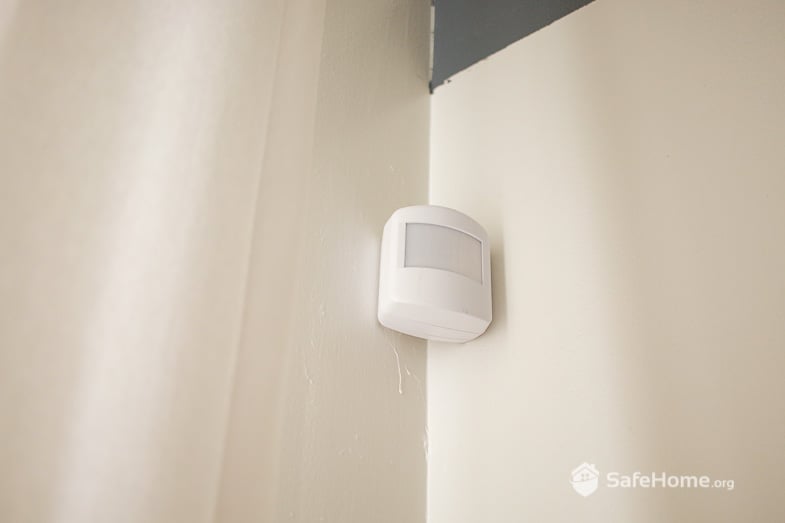
Vivint – Motion Detector
What Is a Motion Detector?
You know the saying “hidden in plain sight”? Usually, it happens because humans are a lot better at noticing and seeing motion than stationary objects. We’re kind of like motion detectors in that way. We can easily notice a change in our environment because it sets off an alarm in our head just like a motion detector triggers an event when it notices a change.
To get a bit more technical about it, motion detectors identify changes in an area by monitoring the environment’s physical or electromagnetic state. When it detects a significant change, like a sudden shift in temperature or a disruption in a radio wave field, it triggers an event. The event could be activating an alarm, turning on a light, or even notifying the local authorities.
How Can Motion Detectors Enhance Your Home Security?
To really leverage a motion detector in your home security, you need to integrate it with the rest of your security system so it can trigger other devices. I usually set up a motion detector to trigger the Ring floodlight that illuminates my back porch. That simple method for home security can be very effective, since 60 percent of burglars choose a different house if they notice any alarms, according to a study from the University of North Carolina at Charlotte.1
When integrated with your home-automation systems, they can also send real-time alerts to your smartphone or other connected devices whenever motion is detected. That allows you to immediately respond to any potential intrusions even when you’re away from home.
5 Types of Motion Detectors and How They Work
Motion sensors can use a few different technologies to detect movement. Each one comes with its own strengths and weaknesses, so choosing the right one for you shouldn’t feel like “Sophie’s Choice.” To help you figure out which type of motion detector best fits your security needs, we broke down the five technologies you’ll see in home security motion detectors.
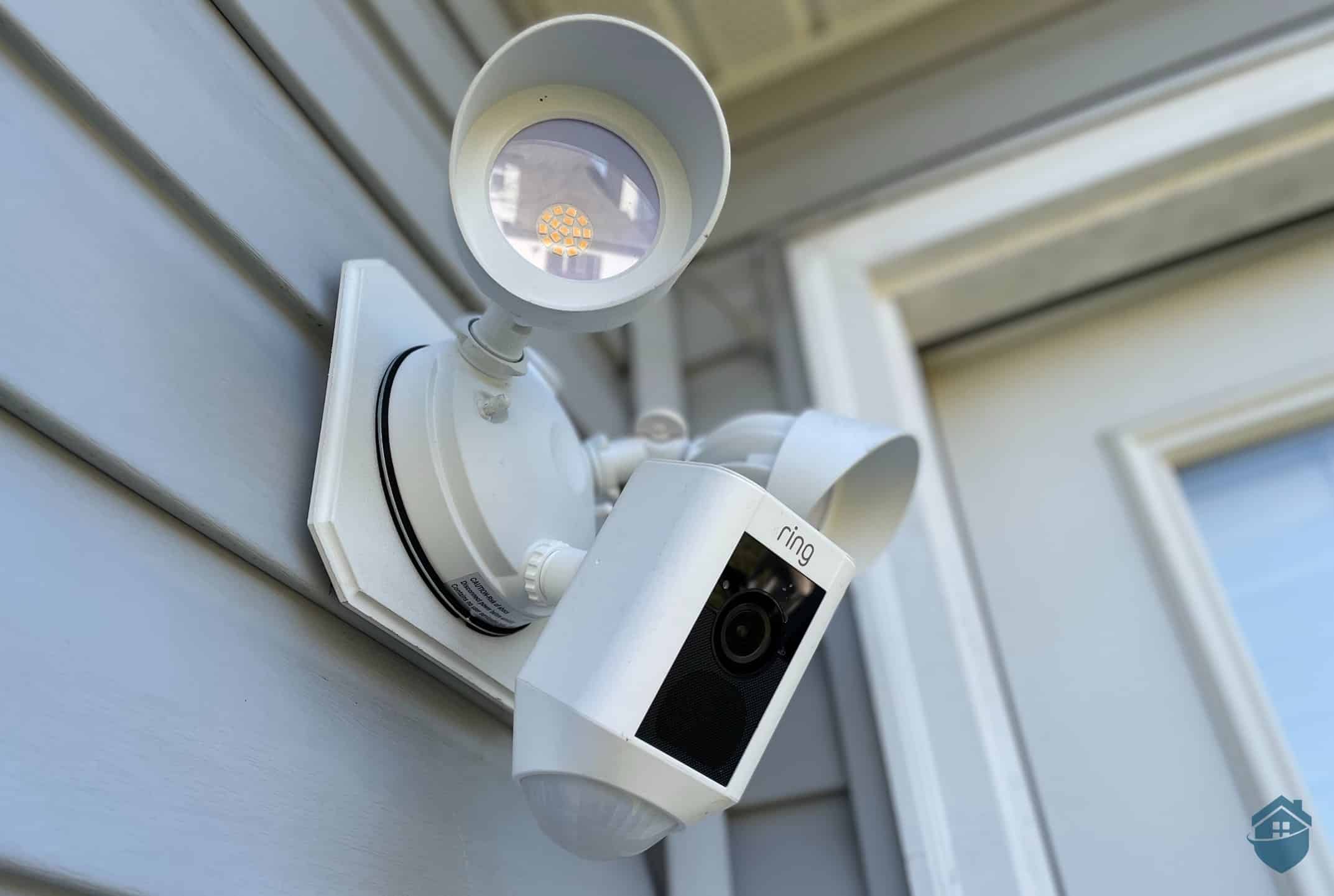
Ring Floodlight
Did You Know? The Department of Homeland Security recommends using “multiple detection technologies to protect against the weaknesses of any one technology” in its handbook for Intrusion Detection Sensors.2
Active Ultrasonic Motion Detectors
Ultrasonic motion sensors map out their surroundings in the same way as bats. They emit ultrasonic sound waves, and then detect the reflection. When the waves hit a stationary object, they bounce back to the sensor with the same frequency the sensor emitted.
When a moving object encounters the waves, it changes the frequency of the reflected waves. The moving object either absorbs some of the wave’s energy or adds energy to the wave, which changes the wave’s frequency. The change in frequency, known as the Doppler effect, triggers the detector.3
What makes these motion detectors active? Since they need to emit an ultrasonic sound wave, they require an active source of energy to generate the sound wave they emit.
Active ultrasonic motion detectors work great for covering large areas with obstructions. Since sound can reflect around corners, the sensors can still detect movement around corners, minimizing the impact of couches, pillars, doorways, and more. They’re prone to false alarms from any moving object in the motion-detection area, however, such as a fan switching on or curtains fluttering in a breeze.
Passive Infrared (PIR) Motion Detectors
Instead of actively sending out signals, PIR motion detectors passively monitor the environment for changes in infrared energy levels. That sounds technical, but all it means is that they can sense body heat. So any warm-blooded animal can trigger a PIR motion detector.
It’s great that PIR sensors give you a way to detect motion without an energy source, but the sensors require careful placement. Any electronic device or piece of equipment that generates heat can cause false alarms. A burglar can also mask their body heat to bypass the sensors without much effort.
Microwave Motion Detectors
No, it can’t heat up your food. But these motion detectors use the same type of energy as microwave ovens, except in much smaller amounts. They actively emit microwaves and monitor their reflection using the Doppler effect to detect movement, just like ultrasonic motion detectors.
The great thing about microwaves for motion detection is they can penetrate most walls. That lets a single motion detector cover multiple rooms or rooms with a lot of obstructions, like your living room. It also, however, makes them more prone to interference and false alarms from other electronic devices. They also consume more energy than ultrasonic sound waves, which means the motion sensor takes up a bit more space in the device.
That said, their ability to “see” through walls like Deadpool sees through the fourth wall makes them well worth it for spaces with physical obstructions.
Tomographic Motion Detectors
Instead of using one sensor to detect motion in a fan-shaped area, tomographic motion detectors create a mesh network of motion-detecting nodes. Each node uses radio waves that bounce around the monitored area, filling the environment. When anything in the mesh network moves, it disrupts the radio waves, which triggers an alarm.
Tomographic detectors work great for covering large spaces, which makes them perfect for large, open homes. But creating a tomographic mesh network costs quite a bit more than a single motion detector, so it’s a premium option.
Dual-Technology Motion Detectors
You can probably tell what this one is from its name, but I’ll explain it anyway. Dual-technology motion detectors use two different types of motion sensors in a single device. Most use a PIR motion sensor and an active sensor to minimize power requirements. They also reduce the chance of false alarms, since both sensors need to detect motion before triggering an alarm.
With dual-technology detectors, intruders need to evade detection by only one of the sensors to evade detection entirely. Basically, they give potential intruders more options for skirting your security measures. They’re a great option for supplementing your security system, but you don’t want to rely only on dual-tech motion detectors.
Installation Tips for Motion Detectors
Just like the Bad Batch betrayed Emperor Palpatine in Star Wars, your security system may betray you if you install your motion detectors incorrectly. To install them well, you need to design a layout that minimizes blind spots and false alarms. Below are a few tips to get the most out of your motion detectors.
1. Know the Range of Your Motion Detector
Every motion detector has a range limitation. They’re not Crosshair, who can hit a target at almost any range. Most detectors we test have a range of between 50 and 80 feet, covering a fan-shaped area in front of the detector. Every model is different, though, so it’s best to check the specs on your motion detectors.
2. Focus on Common Points of Egress
Central areas for getting in and out of your house, such as hallways, entryways, and staircases, should be your main focus when creating your layout. They’re the areas an intruder needs to pass through to get to different sections of your home.
3. Avoid Potential Interference
Always keep motion detectors at least 10 feet away from clear windows, radiators, and heating vents. Those openings can easily trigger false alarms for PIR sensors. For active sensors, loose objects moving from a draft or fan regularly cause false alarms.
>> Fix False Alarms: Burglar Alarms Going Off Randomly? Here’s How to Fix It.
4. Configure Sensitivity Settings
Most smart motion detectors let you set their sensitivity levels using a mobile app. Higher sensitivity gives you a larger detection range, but it increases the chances for false alarms. Start with a lower setting, and then slowly raise it until you start to receive false alarms. Once you get a false alarm, roll back the setting slightly. I’ve found that to be the sweet spot in my tests, since it avoids most false alarms while still giving me the sense of security I want.
5. Integrate With Your Security System
To make the most of your motion detectors, integrate them with your burglar alarm or home security system. Integration allows you to set exactly what you want to happen when a motion detector trips, whether it’s sending you a push notification or locking a smart lock.
FYI: I tested the Vivint Smart Home Security System, which includes a fully integrated security system. It used its motion detectors to learn my routines and automatically optimize security based on the way I live.
6. Regularly Clean Your Sensors
Think of your motion sensors as a pair of glasses. If you don’t clean them regularly, you’ll start to lose some visibility. Make sure to wipe off any dust or debris from the sensor after installing it, and clean the sensor on a bimonthly basis. Without regular cleanings, your sensor can even set itself off from dust reflections.
Current Trends in Motion-Detection Technology
We’re going to get a little nerdy in this section. It won’t be a sci-fi fan-fiction level of nerdiness, but I definitely get excited about the future of home security. We dove deep on a few new technologies, including LiDAR scanning, AI-enabled cameras, and IoT connectivity to see what role tomorrow’s motion detectors could play in your home’s security.
LiDAR for Motion Detection
The land surveying industry used to be the only one that cared about LiDAR technology. Now it paves the future for innovative technology such as self-driving cars. It has even found some cool uses for motion detection.
LiDAR systems work by emitting pulses of laser light and then measuring the reflection time to create detailed 3-D maps of a landscape. To detect motion, they identify changes to the static scene. What’s even cooler is that the systems can be fine-tuned to detect any moving object within a specific size 4limit.[/citations]
Once they detect a moving object within the defined size limit, LiDAR systems can track the object’s movement in addition to triggering an alarm. The tracking can be paired with video surveillance systems, allowing the system’s cameras to follow every step an intruder takes.
Passively Detecting Motion with Video
Using the same technology as your favorite clothing store’s virtual try-on feature, cameras coupled with computer vision software can identify and detect motion. That can simplify a home security system by making motion sensors redundant in a security camera.
If the area is well lit, the best motion sensor cameras can even passively detect changes in light with the camera lens. When the sensor identifies a change in lighting, the camera turns on and uses the computer vision software to detect motion. That also, however, means they don’t usually work great at night.
Pro Tip: Camera lenses can see light that’s invisible to us. It’s called near-infrared light, and you can use it to illuminate an area to a camera while still keeping it dark for humans.
Internet of Things (IoT) Motion Detectors
An IoT device just means a device that can connect to the internet. It seems simple in concept, but it lets devices communicate with each other. The communication means your motion detectors can transmit alerts to your smartphone, giving you real-time updates on your home’s surveillance status.
It also means you can connect your motion detectors with other home-automation devices and security software. That enables a whole slew of custom responses, such as aiming a smart security camera at the triggered motion detector to record an intruder and closing the garage when you go inside.
The interconnectedness makes your motion detectors way more powerful, but it also opens you up to cybersecurity vulnerabilities. Anything hooked up to your home Wi-Fi network can act as an entry point for hackers and cybercriminals. When using IoT motion detectors, always check the cybersecurity capabilities of the manufacturer and use strong passwords when connecting to the device.
Final Thoughts
With motion detectors at your disposal, you can make your house feel like the entrance to a vault in a spy movie. You know, the one with the lasers that the protagonist needs to jump through? With the knowledge you have from this guide, though, you can make your house impossible to pass through without tripping one of your alarms.
Just remember: The way you install and maintain your motion detectors is just as important as the types of motion detectors you use. Take the time to create a layout that optimizes your home’s security and a maintenance plan that keeps your sensors in tip-top shape.


